Here in Wales resides the last non-endangered Celtic language, ‘Cymraeg’, (Welsh). It is one of many links that we can draw back in time to some the earliest examples we have of British bronze, artwork and sculpture.
We think the ‘hidden people’ who lived in Wales, Scotland, England and Ireland* before the isles were conquered by the Romans, had developed a reputation through Europe as fine metalworkers. Particularly, in the making of bronze tools, swords and armour, and in beautiful gold jewellery and ornamentation. The celtic peoples’ oral tradition disappeared after the conquest, leaving Roman written sources undisputed until modern archaeological research showed some of it to be… somewhat questionable.
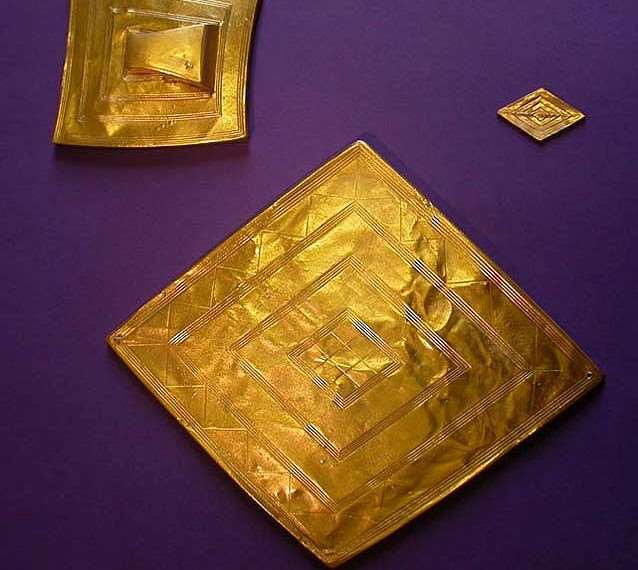
‘Caesar, in writing home, said of the Britons, “They are the most ignorant people I have ever conquered. They cannot be taught music.”‘ Cicero
Right Bronze Age burial artifacts unearthed at Bush Barrow near Stonehenge
While I hope some people might say we Britons are not actually ignorant and non-musical(!) there is plenty of evidence early Britons were very good at making art. Early sculpture and land art is embedded within a European context of the movement of people, ideas and goods. And as the pathways for that movement grows over the passing of centuries, British art and sculpture evolves, responding to and influencing art on the wider global stage.
‘For money they use either gold coins or bars of iron of a certain weight. Tin is found in the inland regions, iron on the seacoast; but the latter is not plentiful. They use imported bronze.’ Julius Caesar
Below These islands had a reputation for metalworking, but perhaps scarce surface copper seams, compared to gold, tin and iron, limited the amount of British bronze casting… with some really big exceptions when rich seams like ‘Y Gogarth’. The map shows exported Welsh bronze axeheads made 3,600 years ago with Great Orme copper, (identified by their isotopic ‘fingerprint’, richness in nickel, and arsenic impurities), now found across Northern European bronze age sites.
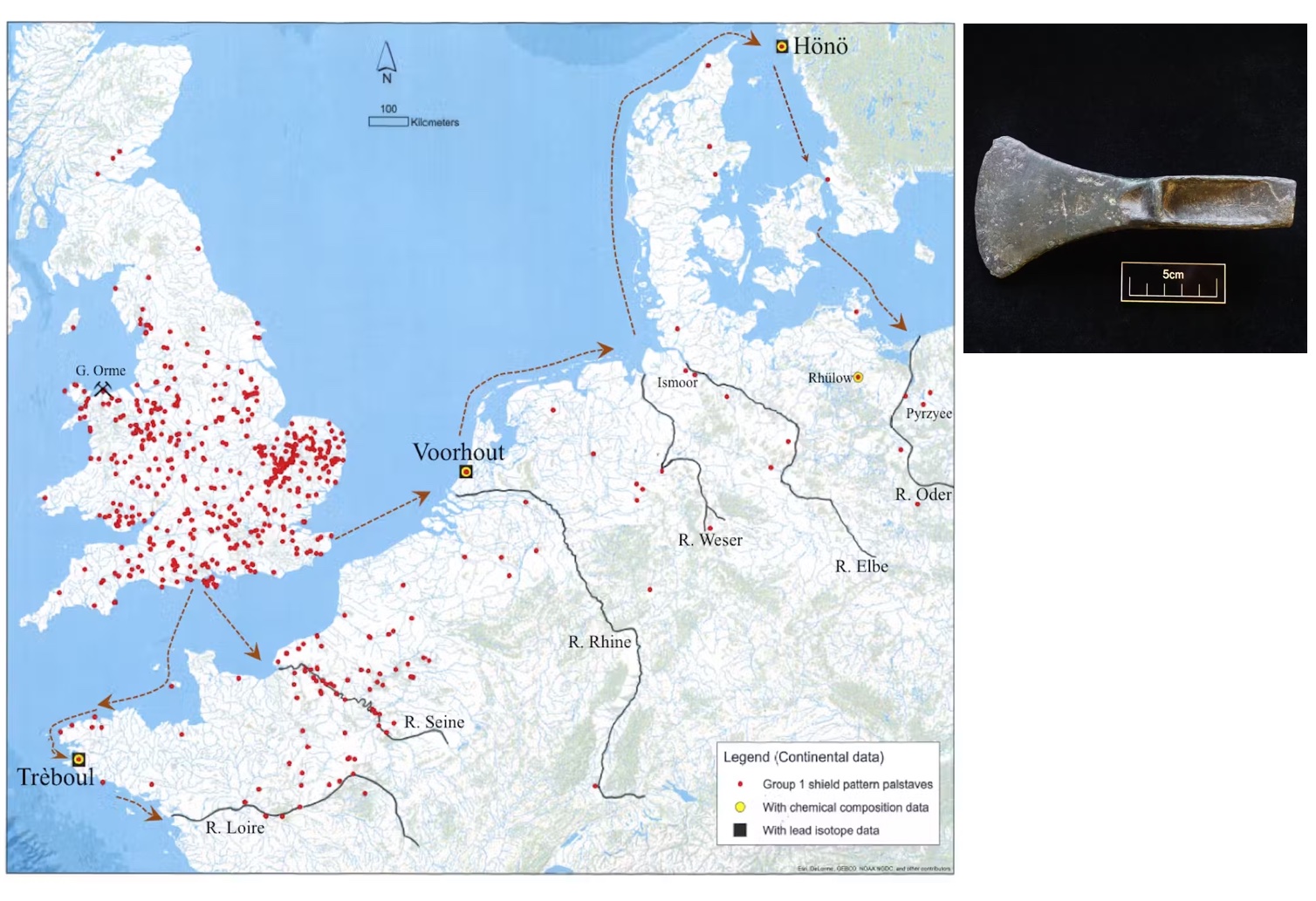
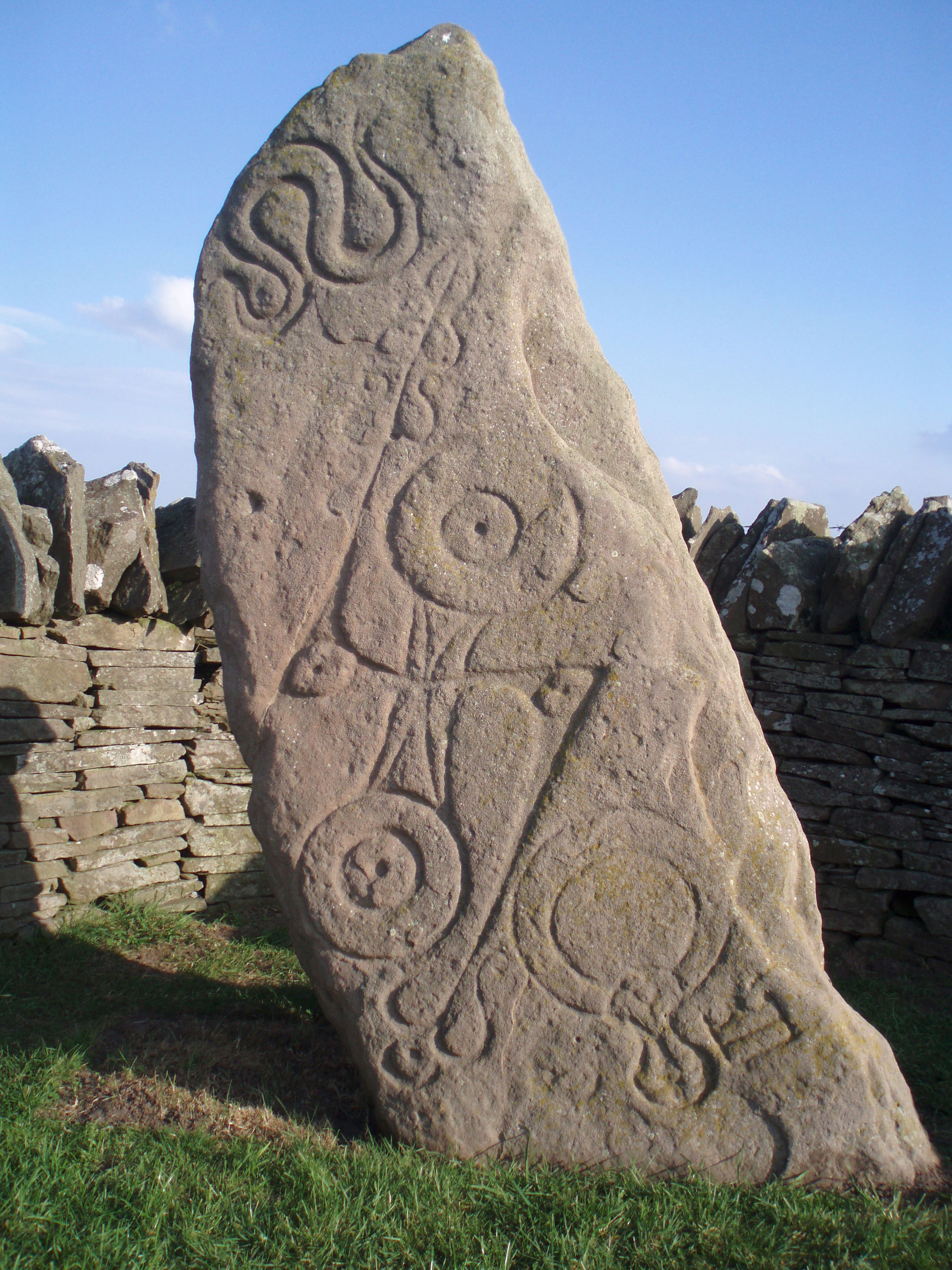
Which all leads us to ask; if we can’t trust the Romans, who can we trust?
The art which has traditionally lasted the test of time, is art made using the most robust materials. Metal, particularly the corrosion resistant bronze & gold, along with stone, are unsurprisingly the materials that last longest. But we should also count among those the land itself. Below is the White Horse, at Uffington, which is estimated to be over 3,000 years old. Objects like the ones above, and places, as demonstrated by land art like the White Horse, all show in particularly gorgeous form, how art can last through the ages, (either with the help of an annual clean and rewax, some judicious mowing, or if really let go for a few thousand years, a lot of archaelogy). But art doesn’t last only through the survival of objects, but the perpetuation of ideas. Note how the horse is carved to replicate the contours of the crest of the hill.
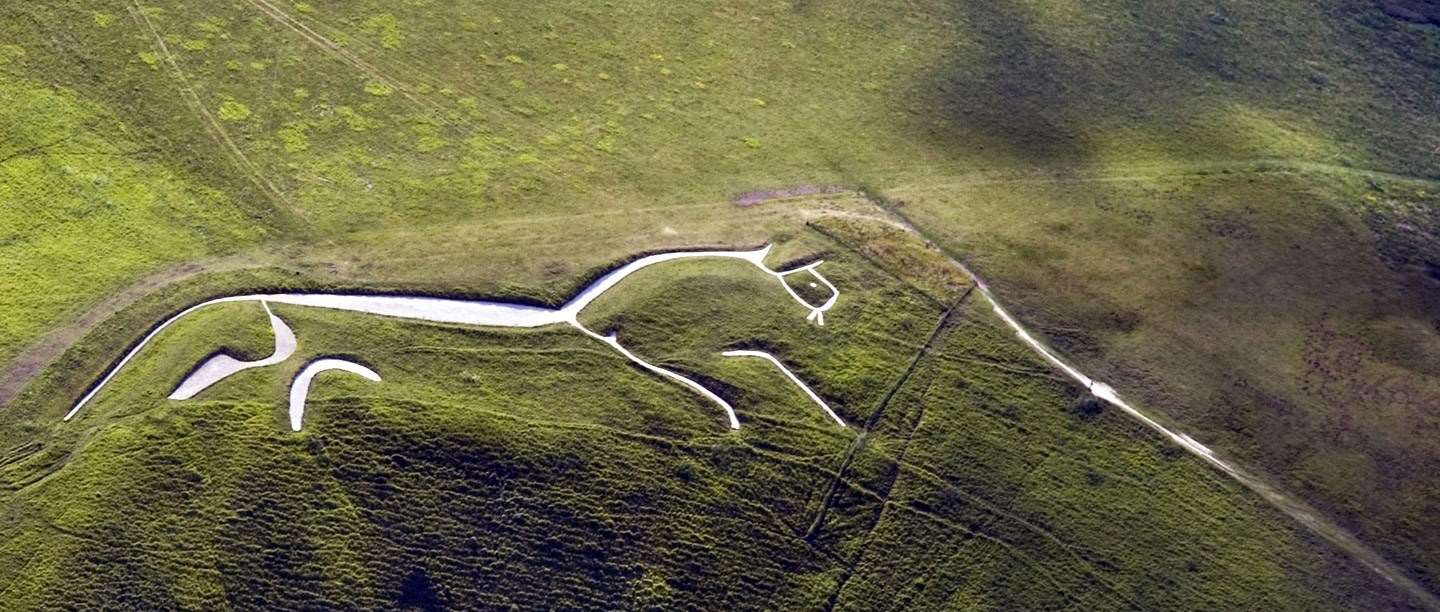
Modern british sculpture, like everything that came before it, relies on the application of tools (including hands) to three-dimensional materials, to make marks and shapes, or to fabricate. The history of modelling these shapes and marks, or fabricating sculpture, along with the techniques used, still lurk in passed-down skills and knowledge. They also reside in the ‘re-discovery’ of old methods; and in the process of artistic inspiration. Parallels still pop up, even when our contemporary artists actively seek the paths of self-exploration. Indeed, not all sculptors draw directly on history to find their next mark, shape, or concept – but the sculptors who actively reject some part of the old ways of sculpting, are still inextricably part of that tradition.
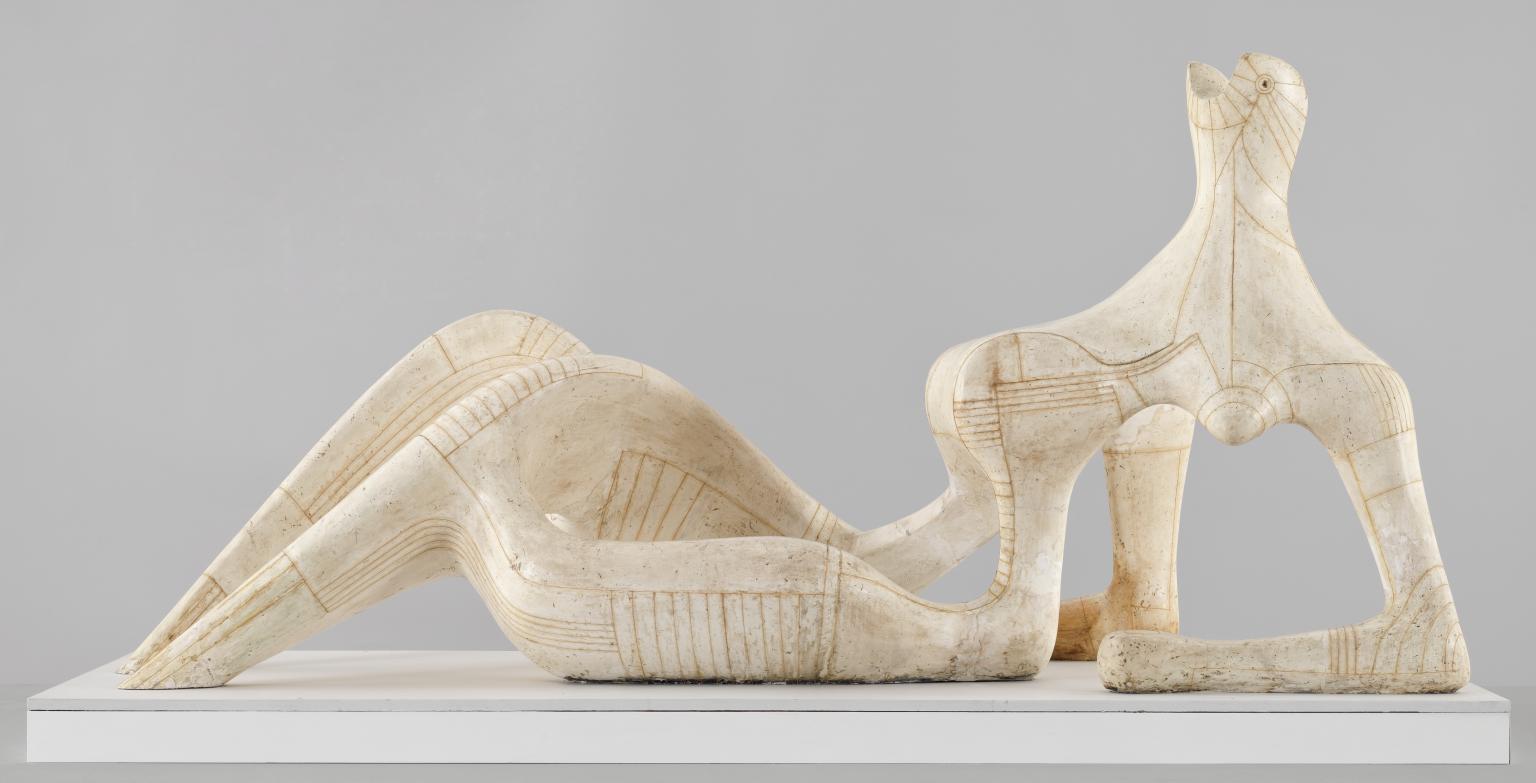
Above Left Modernism is a rejection of traditional art. Here ‘Reclining Figure’ by British sculptor Henry Moore (d.1986) rejects the patterns of expression of his proceeding generation of sculptors. Yet, even the rejection of what comes before it still forms part of Britain’s sculpting tradition.
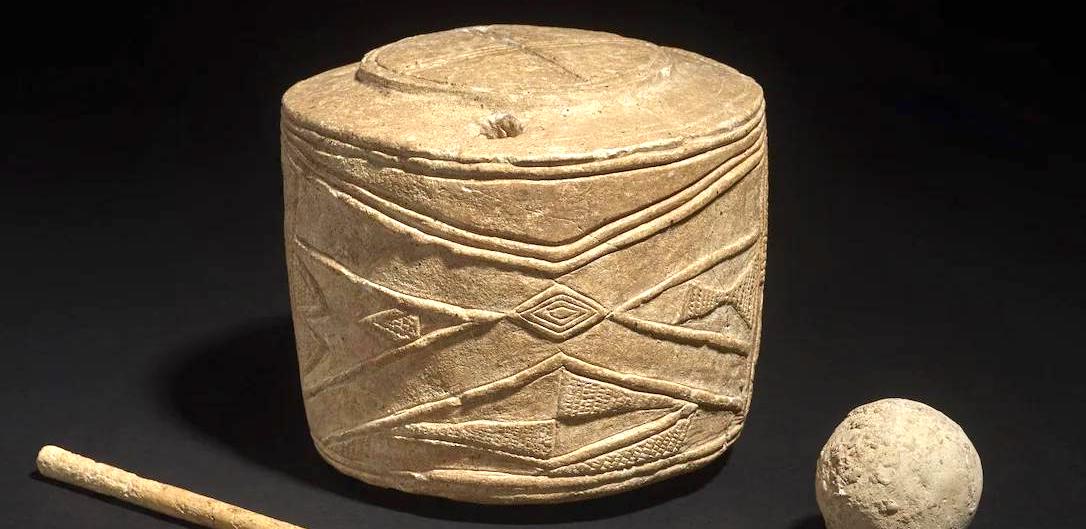
Above Right You can see there are still parallels to be made between an original, modernist sculpture made in 1951, and a 5000-year-old chalk sculpture (the Burton Agnes Drum). The confines of manipulating 3d material using the human body and tools creates a common sculpting vernacular – a tactile, visual method of communication that has evolved a millenia-old language.
Such comparisons can be a little fatuous – the equivalent of Bobby Henderson’s identification that the trend in rising world temperatures occurred at the same time as a fall in piracy – leading to the tongue-in-cheek causal assumption that global warming is caused by pirates. But I’m seeking to throw a net around the entirety of British bronze, stone and land art here; to invite the assumption that my own bronze statues are sophisticated and valuable – because they benefit from such a rich tradition of British creation and creativity. Yes…
Much of the pre Roman art that still exists appears more utilitarian than we are used to today. Weapons, shields and armour, harnessess for horses and gaming pieces. The balance seems skewed away from aetheticism – where art finds justification in its own essences, and utilitarianism, where art has an immediate utility to society. Partly this might be relative poverty, where the things made in hard, expensive, and long-lasting materials like metal had to earn it’s keep. Partly this might be a false sense of categorisation, because a very large amount of the sculpture in this period is acquainted with status, ceremony, religion, and place. This insubstantial ‘utility’ is far closer to our modern sense of what sculpture and art ‘is’.
Right Enamelled decoration from Celtic horse harness, found in Norfolk.
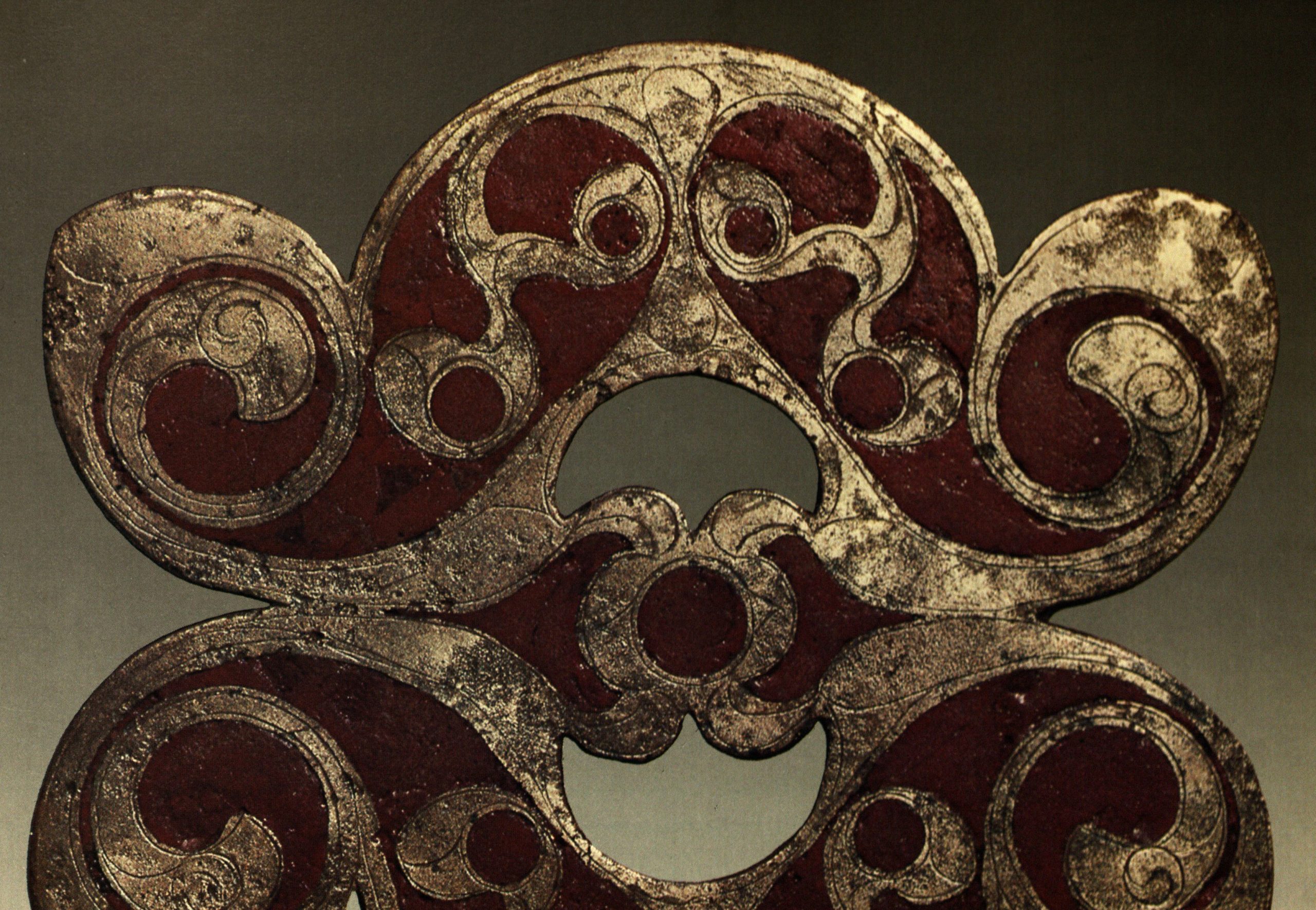
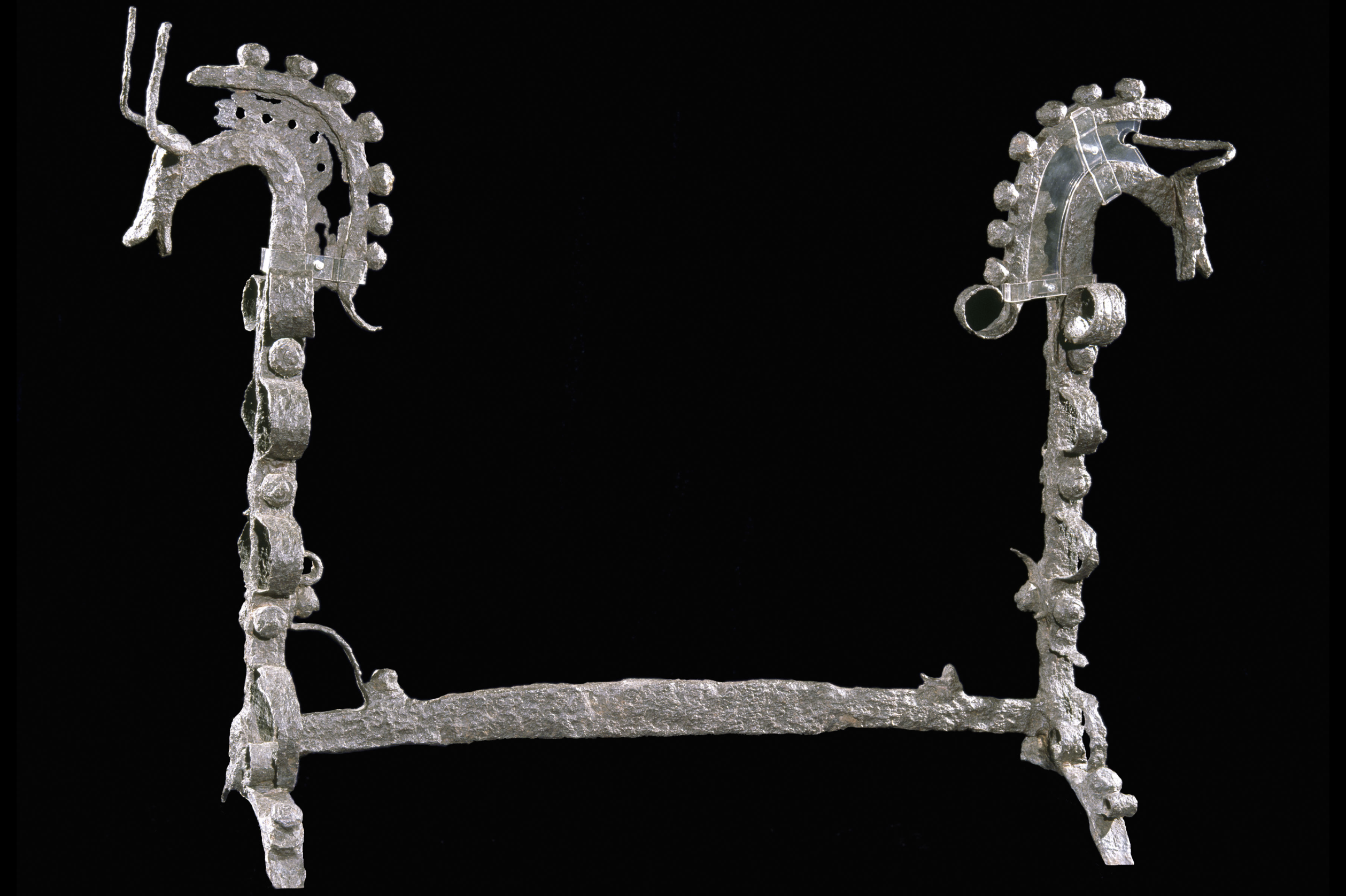
Here is the Capel Garmon Fire Dog, made of iron and found in Wales. It likely graced a chieftain’s fire before being thrown into a body of water as an offering to a Celtic god and surviving, preserved in the peat. The Fire Dog is Late Iron Age, and the shield and torc above are Early Iron Age. The swirls are lovely but I particularly like early animal sculpture such as these horses!
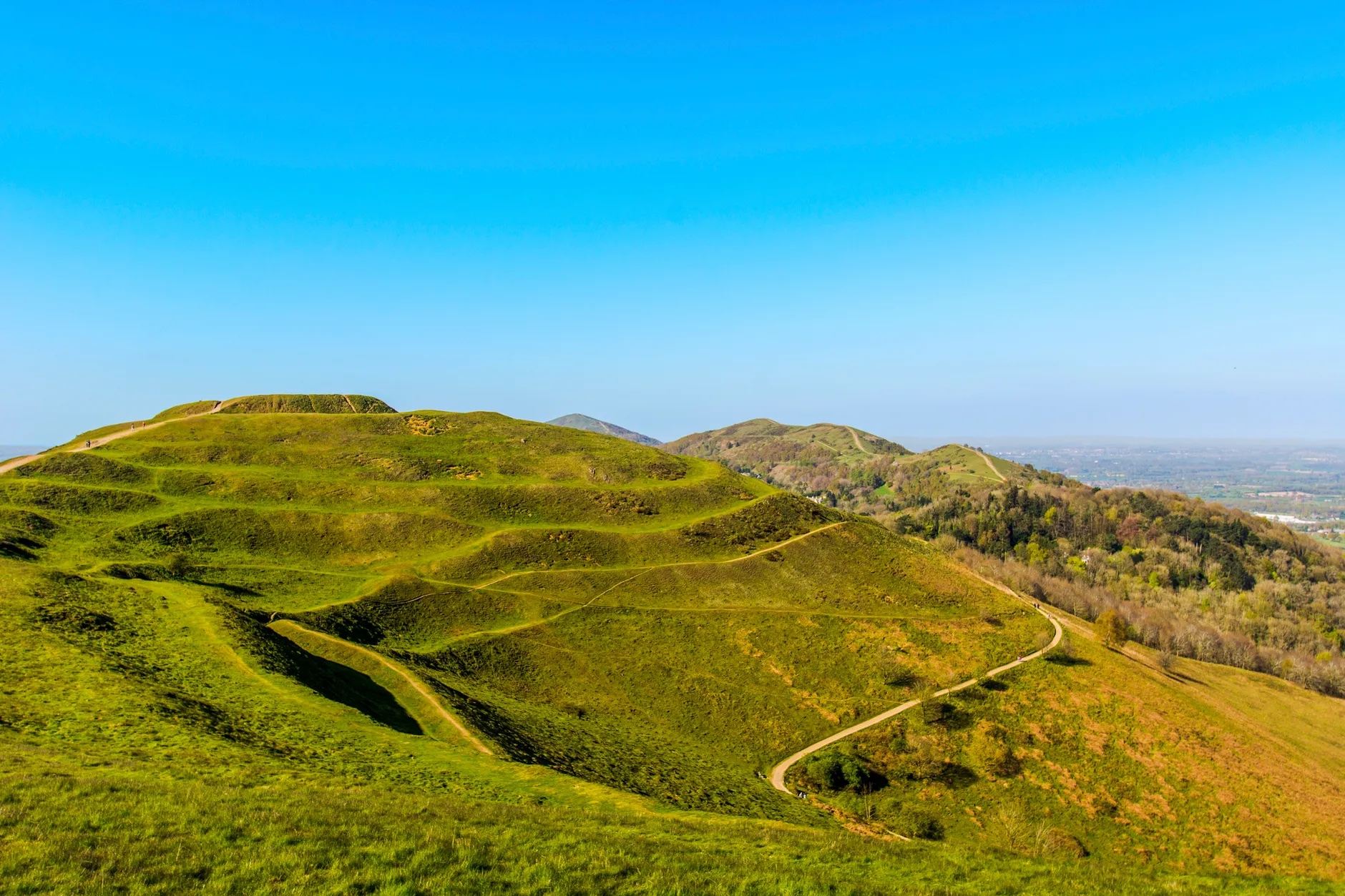
Above: Land art as we know it in the 20th and 21st centuries has its precursor in the earthworks thrown up in prominent strategic places, that were not created for artistic purposes, but military ones. Much earlier precursors can be found in the spiritual movements of rock and earth, in funerary barrows and famously Stonehenge.
Below: 10th Century (so 2000 years younger than the Uffington Horse), the Cerne Abbas chalk giant has probably lost a cloak, and possibly also a severed head with time. Theories abound about saxon deities, Romano-British depictions of Hercules, and 17th century fakery. Either way, a lovely, ‘living’, changing artwork relying on revival through communal labour.
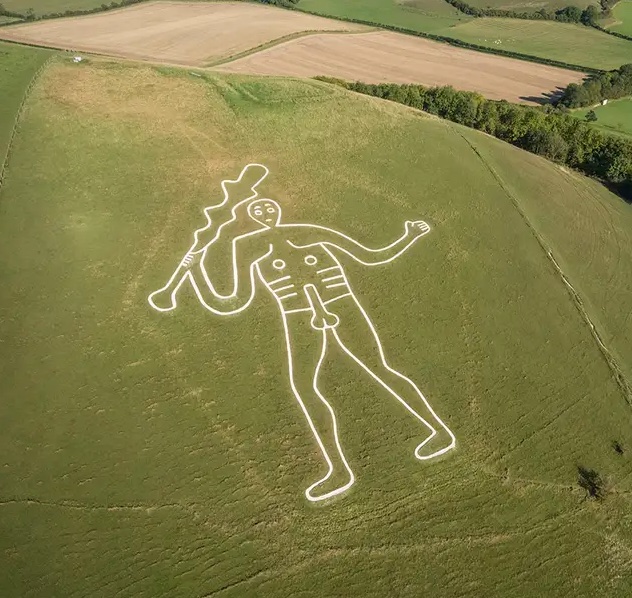
The celtic styles did not disappear with the Roman conquest of Britain, they persisted, perhaps as the Romans never penetrated the furthest regions of England, Wales and Ireland. But also because the cultural makeup of a place changes more slowly than the military borders that divide it.
Upper Right A beautiful example of a coin mould – the Lingwell Gate roman coin moulds were actually used for counterfeiting officially issued coins! This is not a carved mould, which would have created the best detail on the silver denarii made with it – but an impression mould, made by imprinting an existing coin onto a soft material to capture its detail by replication.
Lower Right This Romano-British sculpture is a fascinating depiction of the now iconic Roman soldier, complete with horse-hair crested helmet. It was made around the 2nd or 3rd Century AD.
Sculpture of this period can look crude, but it is important to consider how weather, corrosion, burial and even re-use has impacted what lasts for us to look at today. Below is the Corbridge Lion – a Romano-British stone sculpture designed for a mausoleum and repurposed. His teeth were knocked out when he was repurposed as a water-spout. The Romans were here for three hundred and fifty years and art like the Corbridge lion shows the adoption in Britain of new sculpting methods and styles. The gradual Christian conversion of the Roman Empire brought the first wave of Christian iconography to Britain. But by the time they left Britain, the Celtic gods, the Roman pantheon of gods, and the Christian god were all still present, persisting in different forms and different regions. Some
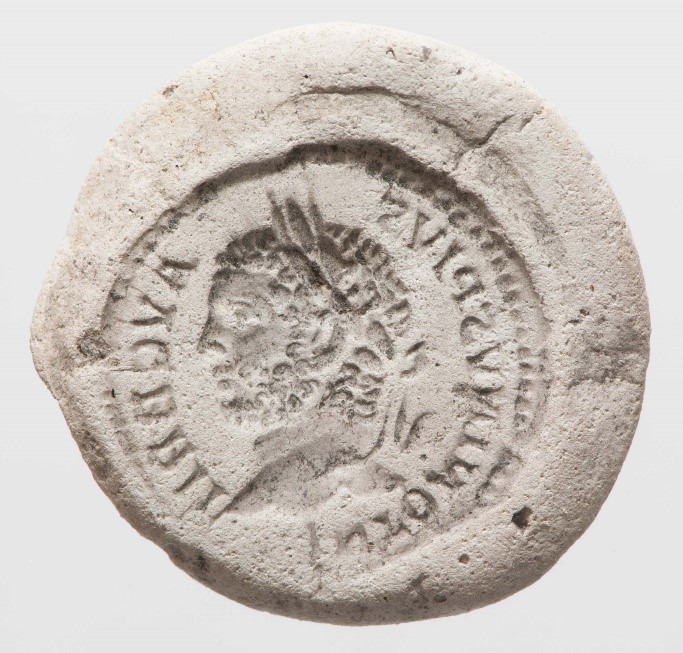
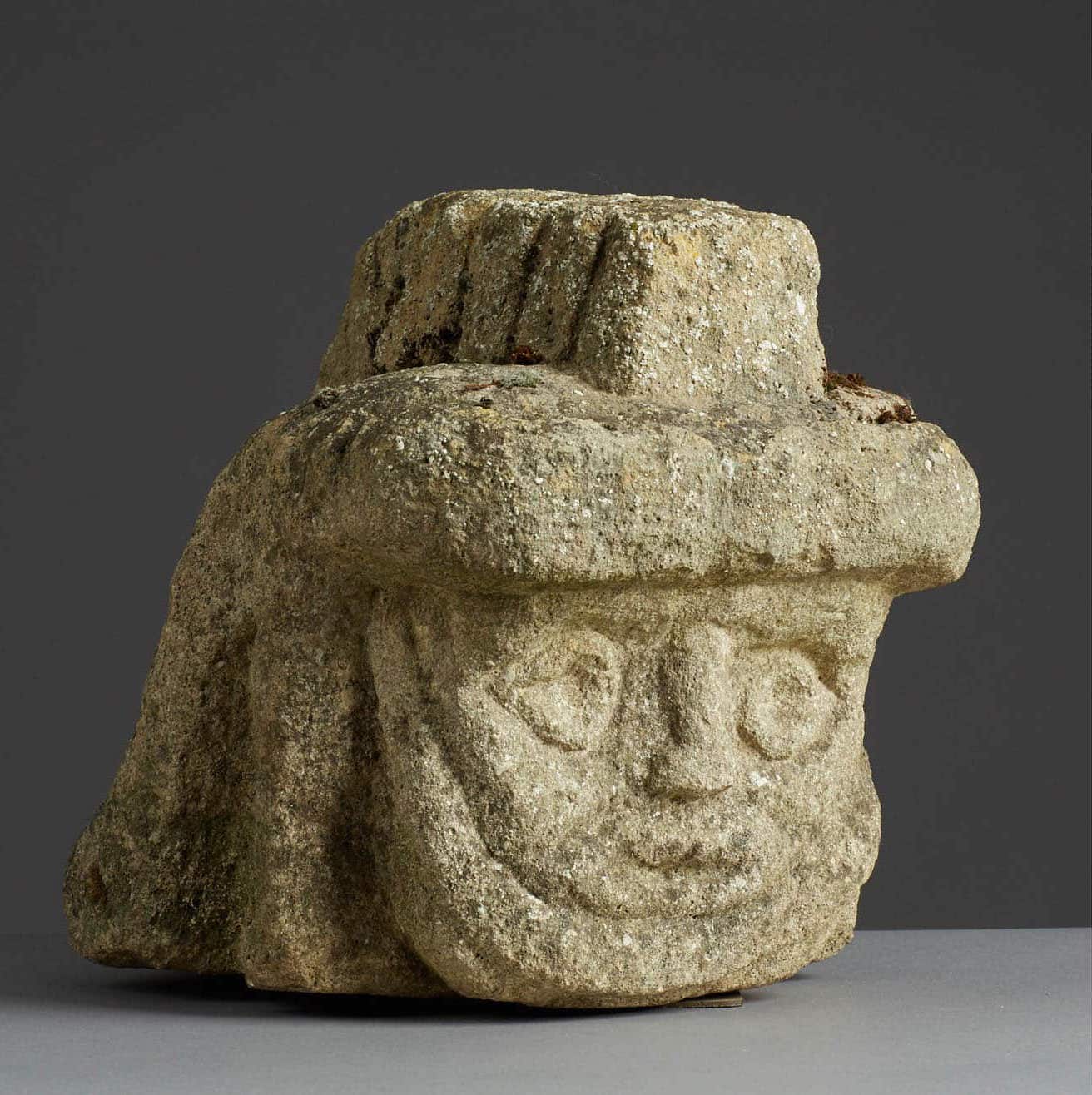
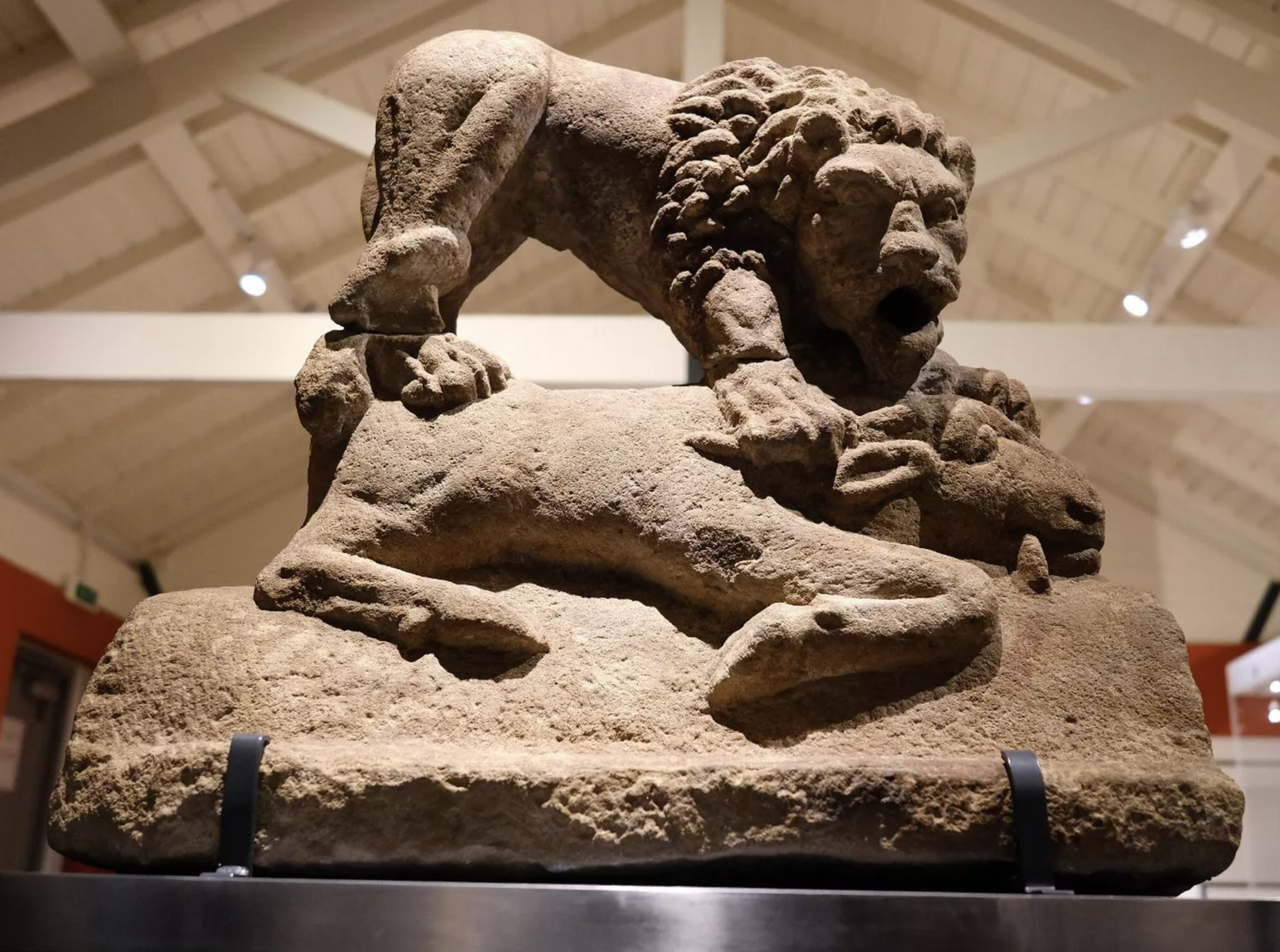
After the ‘Bronze Age’ came the ‘Iron Age’, and in Britain this included the use of the swirling celtic designs known popularly as ‘La Tène’, and even more popularly replicated in modern celtic-style tattoos! This style is actually most closely associated with Central Europe, were those earliest migrants that became the ancient Britons had their origins.
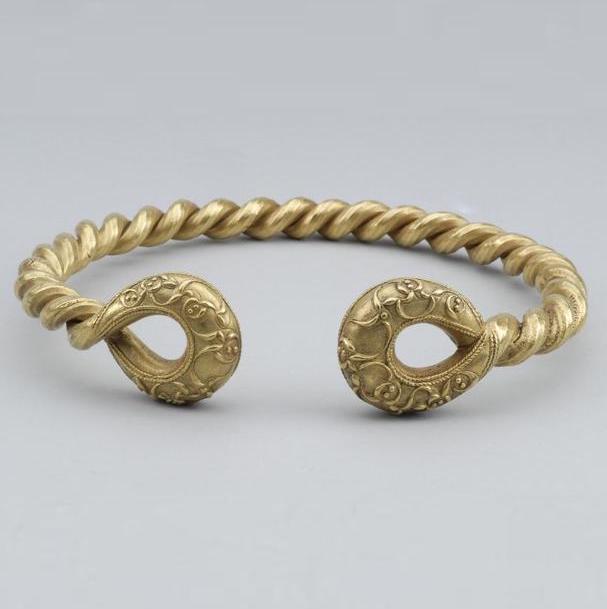
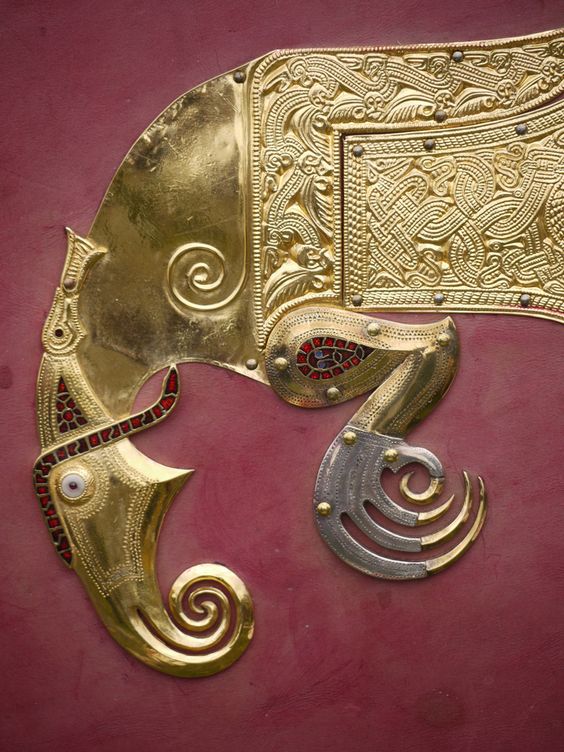
410 AD to 1066 AD, the time between the ending of the Roman occupation, and the Norman invasion, was often referred to as ‘the Dark Ages’. Supposedly it was a 600 period of cultural diminishment between two civilised occupiers. Successive waves of Scandinavian, Danish and German invaders did cause massive disruption to the native populations, but they brought their own cultural influences to what was becoming a very diverse melting pot.
Right: The statue of Alfred the Great, who styled himself ‘King of the Anglo-Saxons’, after fighting Viking invasions for many years, he then compromised, splitting England in two – an Anglo-Saxon part, and a Viking ruled part called ‘Danelaw’. The statue is fascinating because the bottom of Alfred’s statue is Roman – from a statue of Minerva made in 80–130 AD. The top is a late 18th century addition! There are many examples of the reuse of long-lasting artworks like this. Below Left is the best preserved of the Govan Stones in Scotland. This beautiful sarcophagus may belong to King Constantine I, who died in 876 fighting the Vikings.
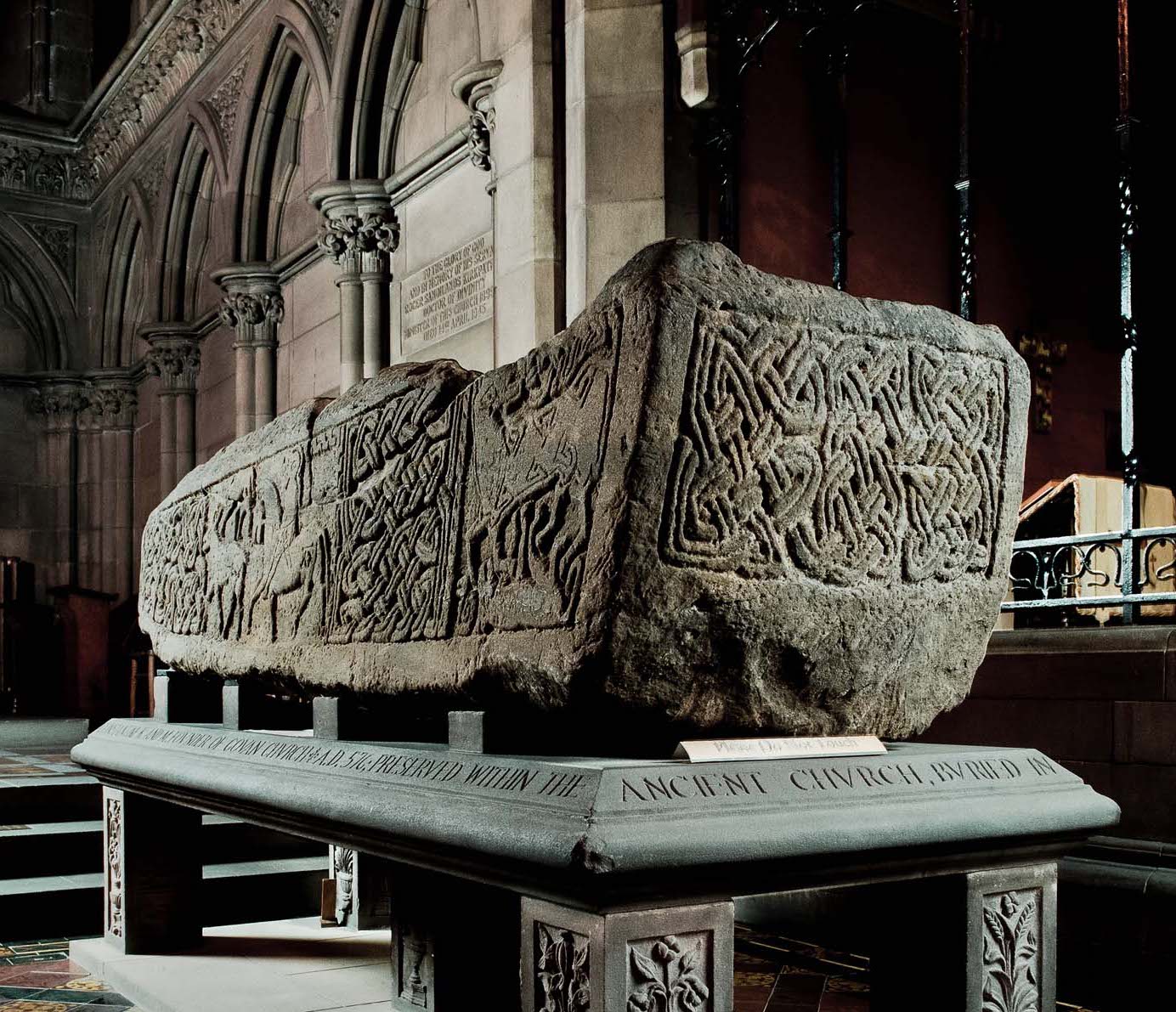
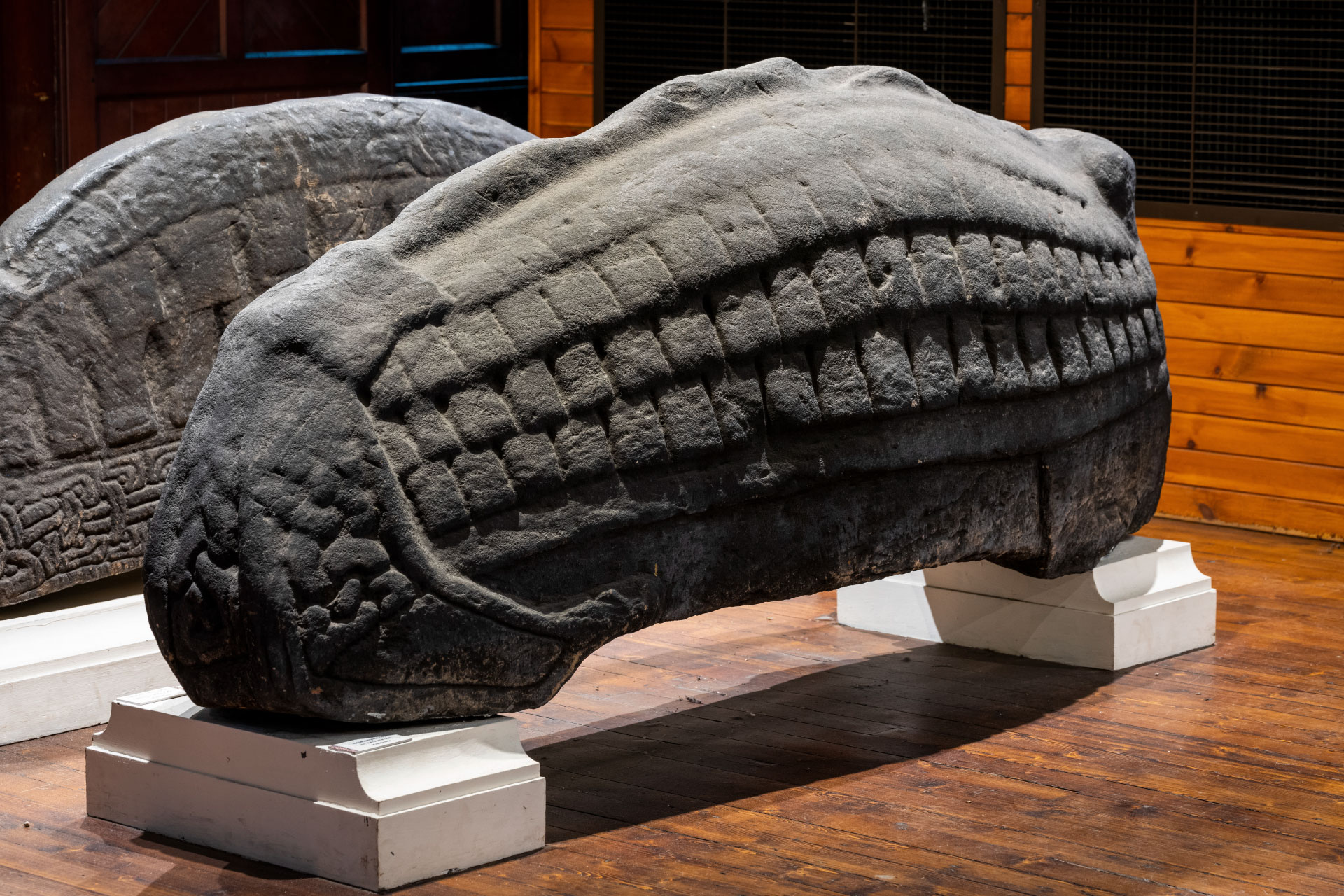
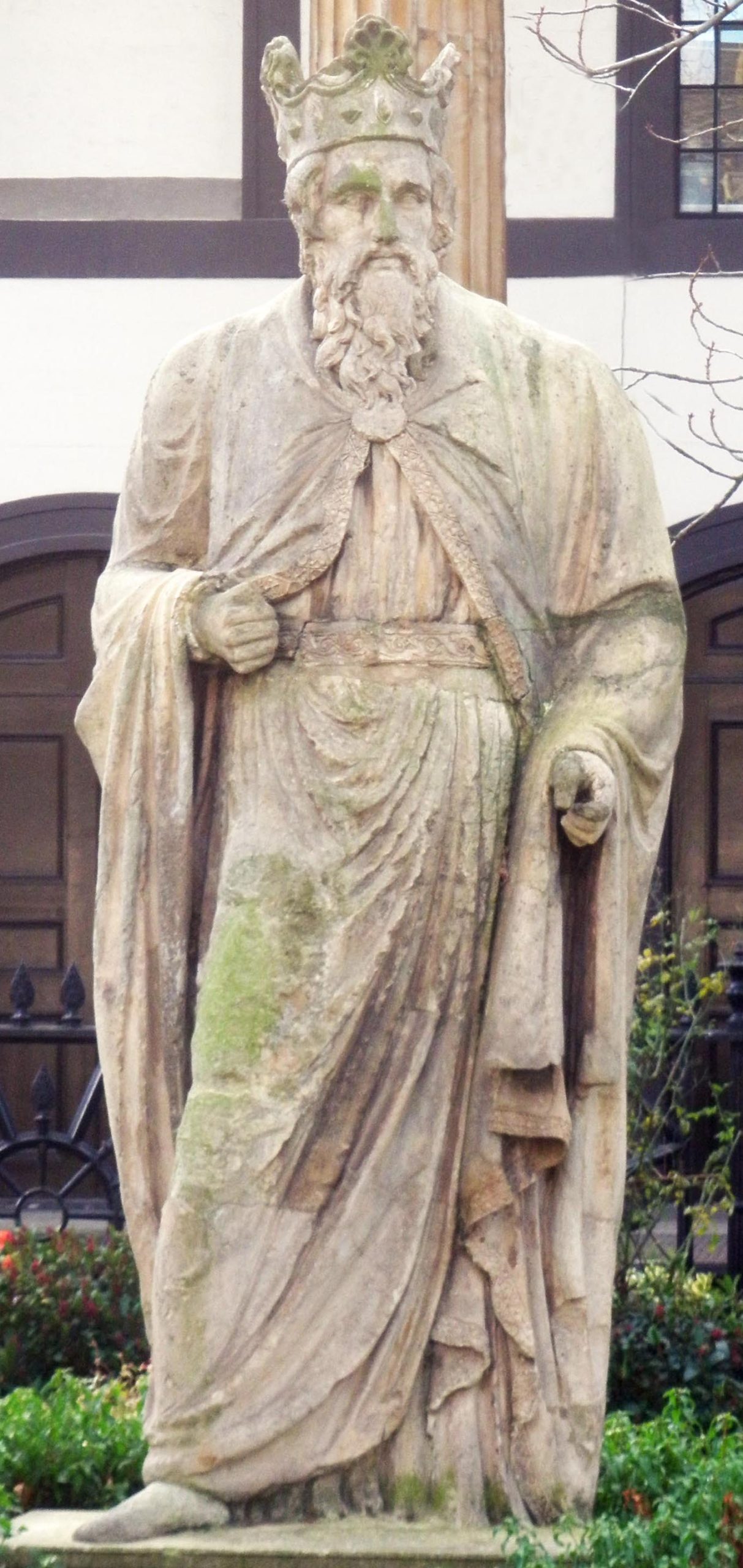
Left The Govan Stones also include several ‘Hogsback’ Stones, which are seen as Viking influenced. The carvings suggest the shingles of a house, or the hull of a longboat. Some look to have been recarved to suggest mythical beasts. They are particularly fascinating as no examples exist in Scandinavia.
Below This early medieval period is very notably responsible for the burgeoning Christian imagery in historic British sculpture, which flowered in Ireland and spread into other areas of the British Isles. So much of the sculpture that survives is religious that historians have theorised why it is so dominant. One theory is that the Church was the centre of social and political life. Another is that it was, alongside the developing nobility, one of the few sources of funding for expensive artwork. Another is that there is a survival bias – religious work, often placed in important locations, such as churches, may have been perceived as more valuable, and deserving of preservation.
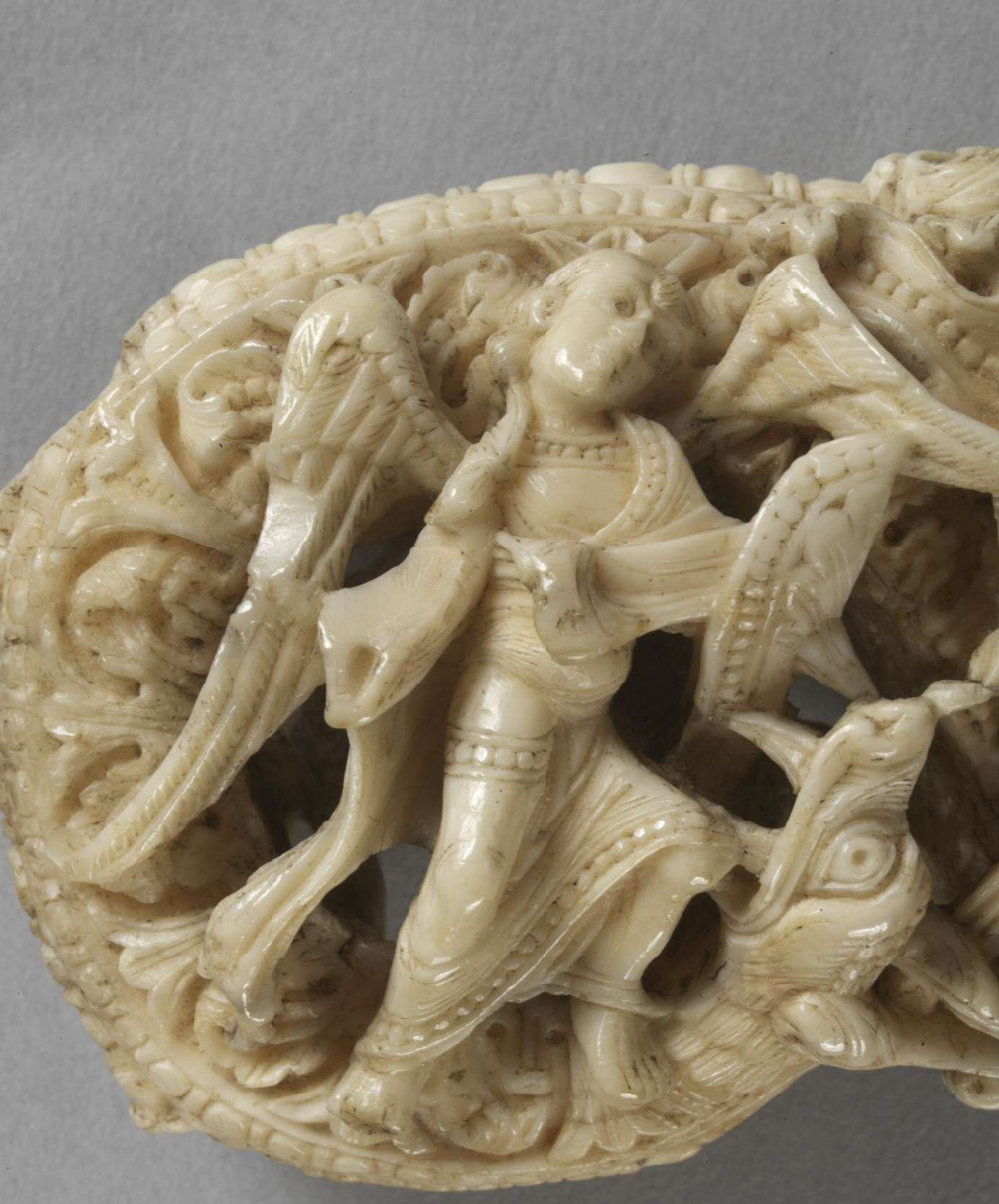
Above Detail from the Winchester Tau-Cross Head, carved in ivory around the 7th Century.
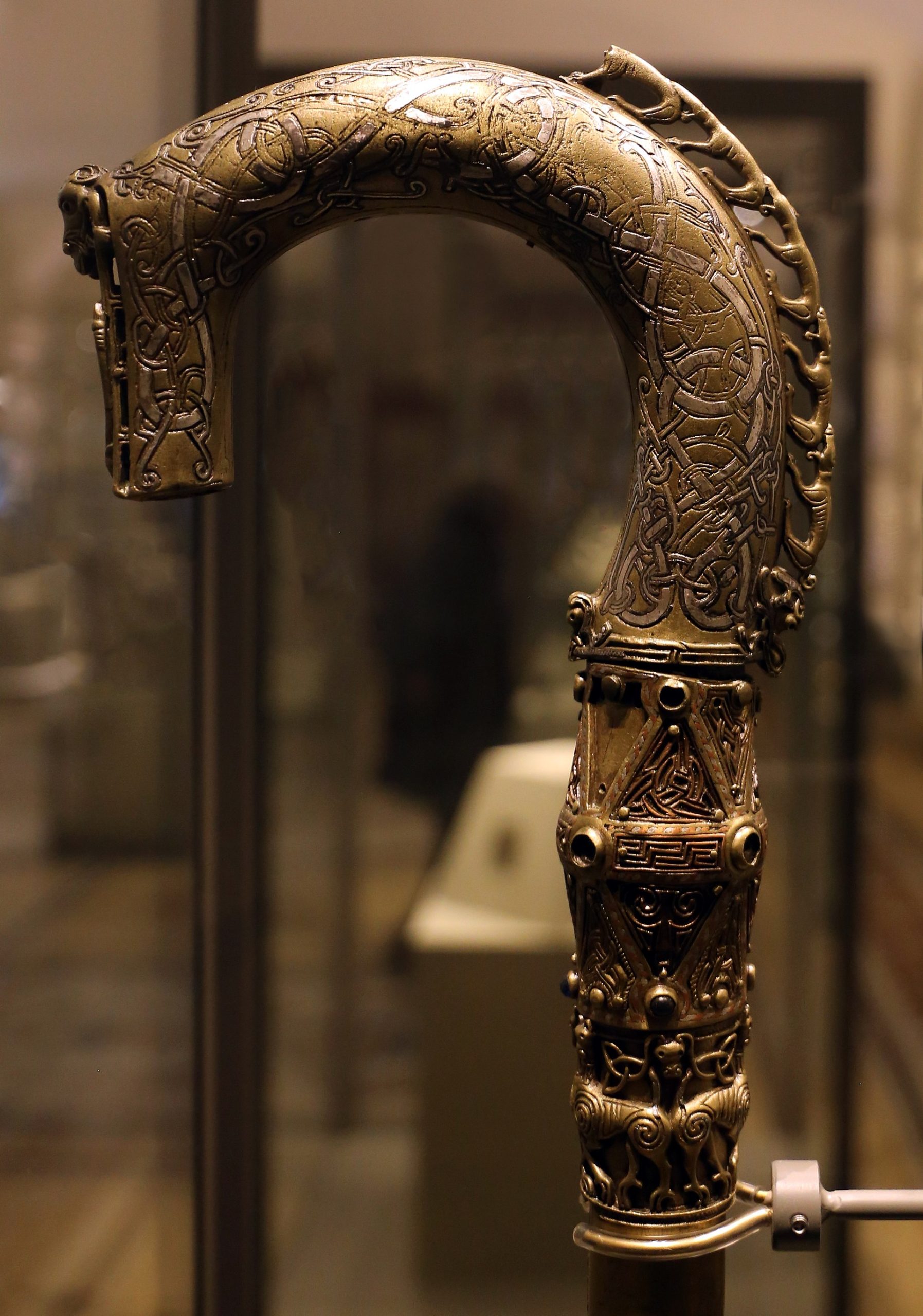
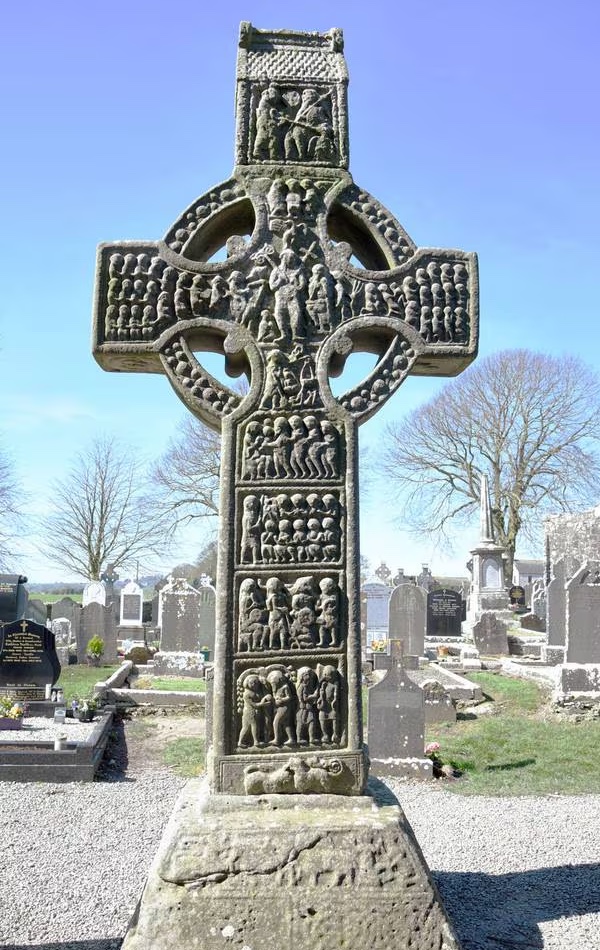
Above Right The spectacular Muiredach Cross in Meath, Ireland dated to the early 10th Century. These two images are also a wonderful example of aging in different conditions – preservation indoors has kept the detail of this ivory crozier decoration looking fresh, where the sandstone has weathered.
Left The Clonmacnoise Crozier is late 11th-century and a lovely example of Irish metalwork. Look at the beautiful line of dogs on the top! Croziers are inspired by the idea of the priest being the shepherd of their flock. Ireland and its evangelising monks were responsible for the spread of Christian iconography across the rest of the British Isles.
Below The screaming face of the Iona island monastery illustrates the story of the live sacrifice of a man, buried to ensure the foundations of the abbey. Dug up three days later, the monk, still alive, told them “There is no such great wonder in death, nor is Hell what it has been described,” at which heresy St Columba ordered him buried again! The monk Oran is forever trapped in the stone, screaming.
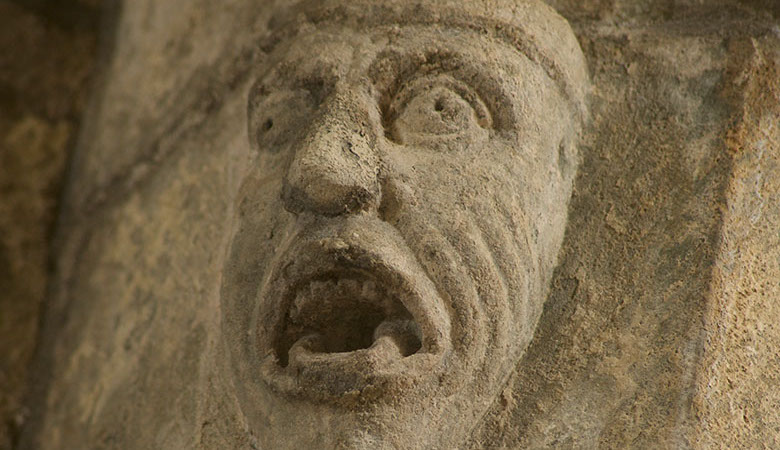
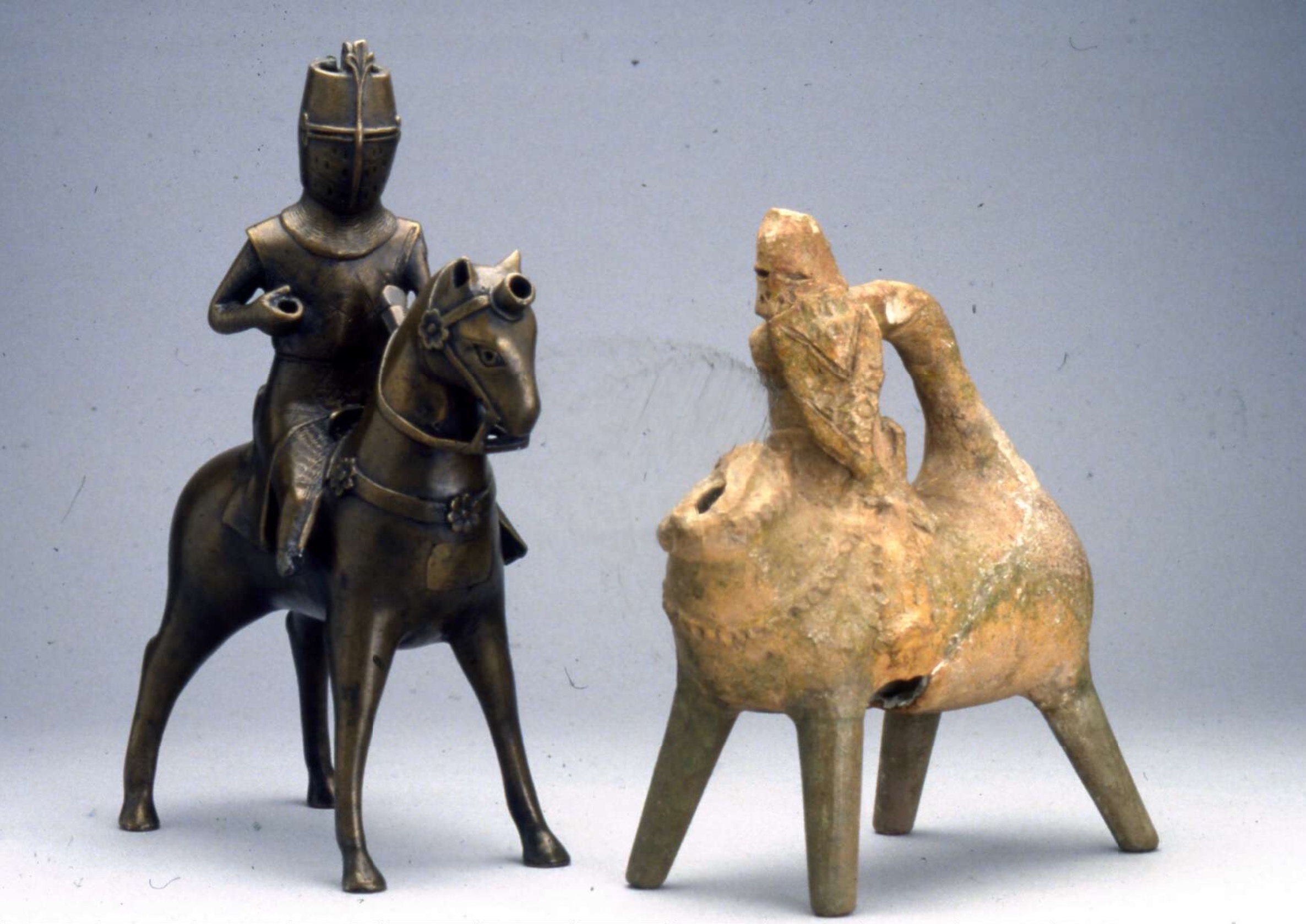
Below The Warwick Gittern (14th-15th century) capturing a dynamic hunting scene with a bowman moving through thick foliage and captured in the act of shooting his arrow at his quarry.
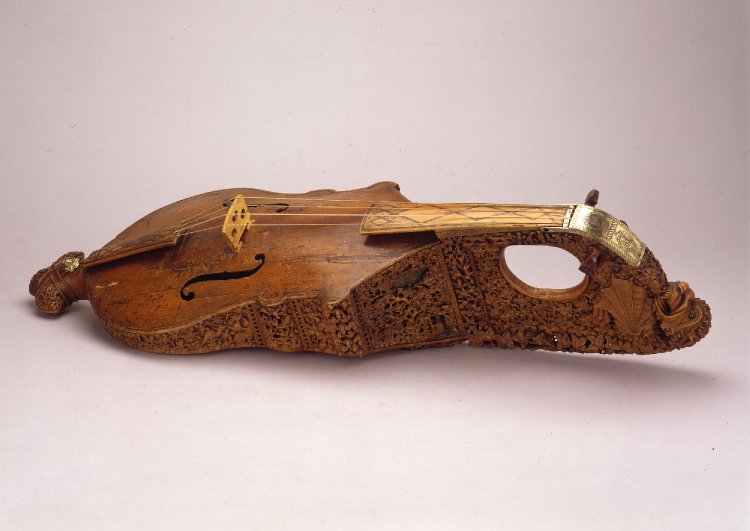
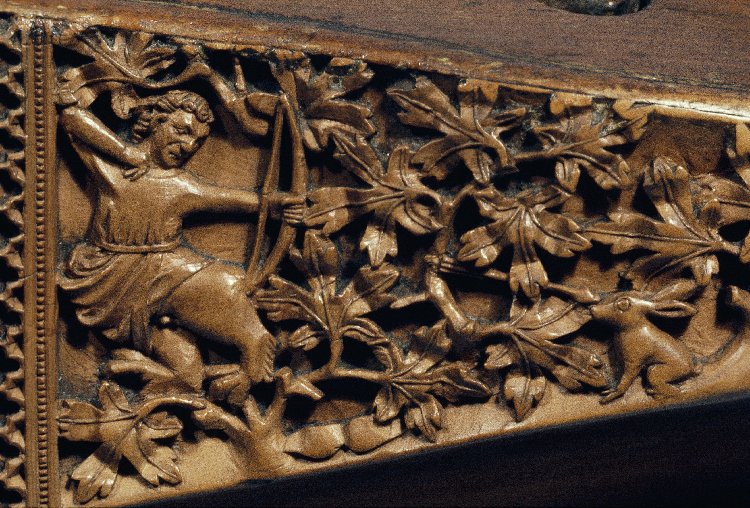
Left Bronze and ceramic aquamaniles from the 13th Century, used for washing hands at table. Both fashioned as knights.
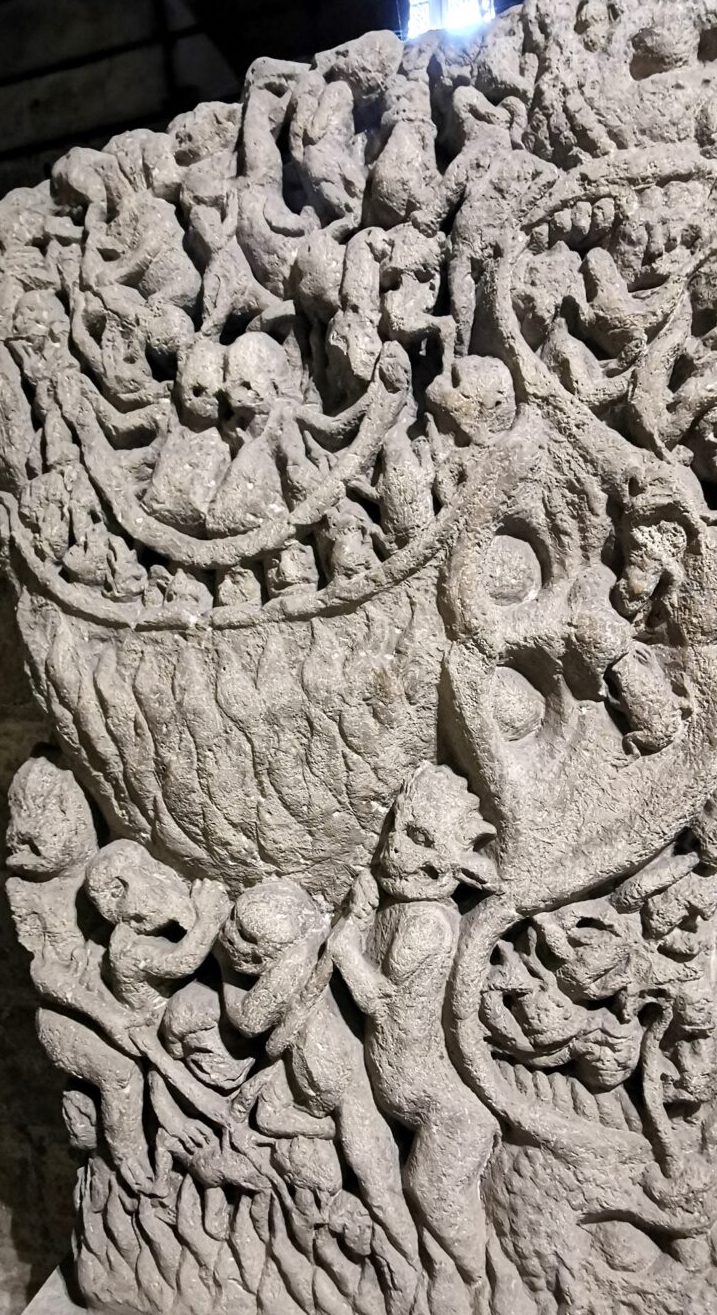
Above The sinister Doomstone in York Minster. The carving depicts a cauldron and the three mouths of hell. A tortured soul is lowered into the boiling 12th Century version of just punishment. A perfect depiction of why the croziers we’ve just looked at were so necessary!
Religious sculpture is a major theme in surviving British craftmanship, developing and changing with the major trends of the passing centuries. The holy buildings in Britain showcase one of the materials not featured greatly earlier in this discussion. Wood – one of the most available, relatively easy to work, and inexpensive 3d materials, has sadly been most impacted by the passage of time. Most early Celtic decorative work has been lost, along with the perishable material it was carved on, (see the state of the 6,000-year-old Maerdy oak, only just identifiable as having been carved decoratively all those years ago, and the only surviving example of wood carving in Britain from that period.) Moving forward in time, medieval wood carving has been particularly well preserved in Britain’s churches, despite the destruction of much of the Catholic ornamentation in the Protestant Reformation. Britain’s angel roofs (13th to 15th Century) represent the largest body of surviving Medieval wood carving. Below is St Peter Mancroft, and it showcases the extraordinary feet of creating sculpture designed to be viewed from 60 feet, or 18 meters, below.
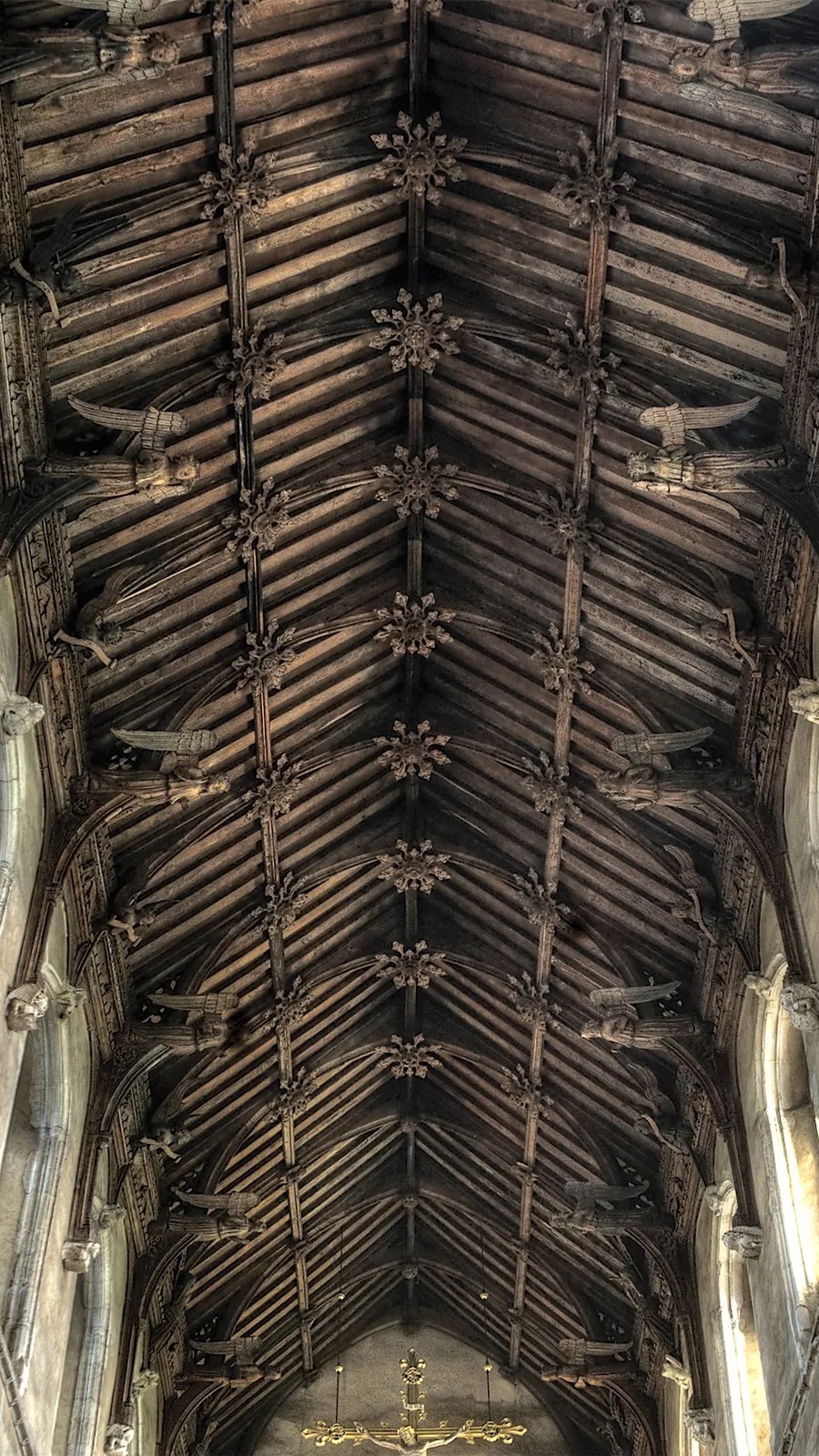
Below Right: Considered one of the finest 15th Century bronzes made in Britain, the tomb of Richard Beauchamp in Warwick is armoured in full ‘steel’ plate, at prayer, and accompanied by the family emblems of a Bear and a Griffin. The protective cage is very unusual, giving a strange sensation when looked through from the perspective of the gilded effigy. Below Left: I’d like to juxtapose this with the 15th Century bench end carvings in St. Mary’s Church, Beverley. The warmth of the material speaks to me, and the sense that these kinds of carvings are so much closer to the everyday medieval citizen than the impressive gilt monument to the Beauchamp family. I feel I sense the sculptor more in these kinds of designs, and I enjoy that feeling of the artist’s individuality, observation, imagination and the execution of their mark making.
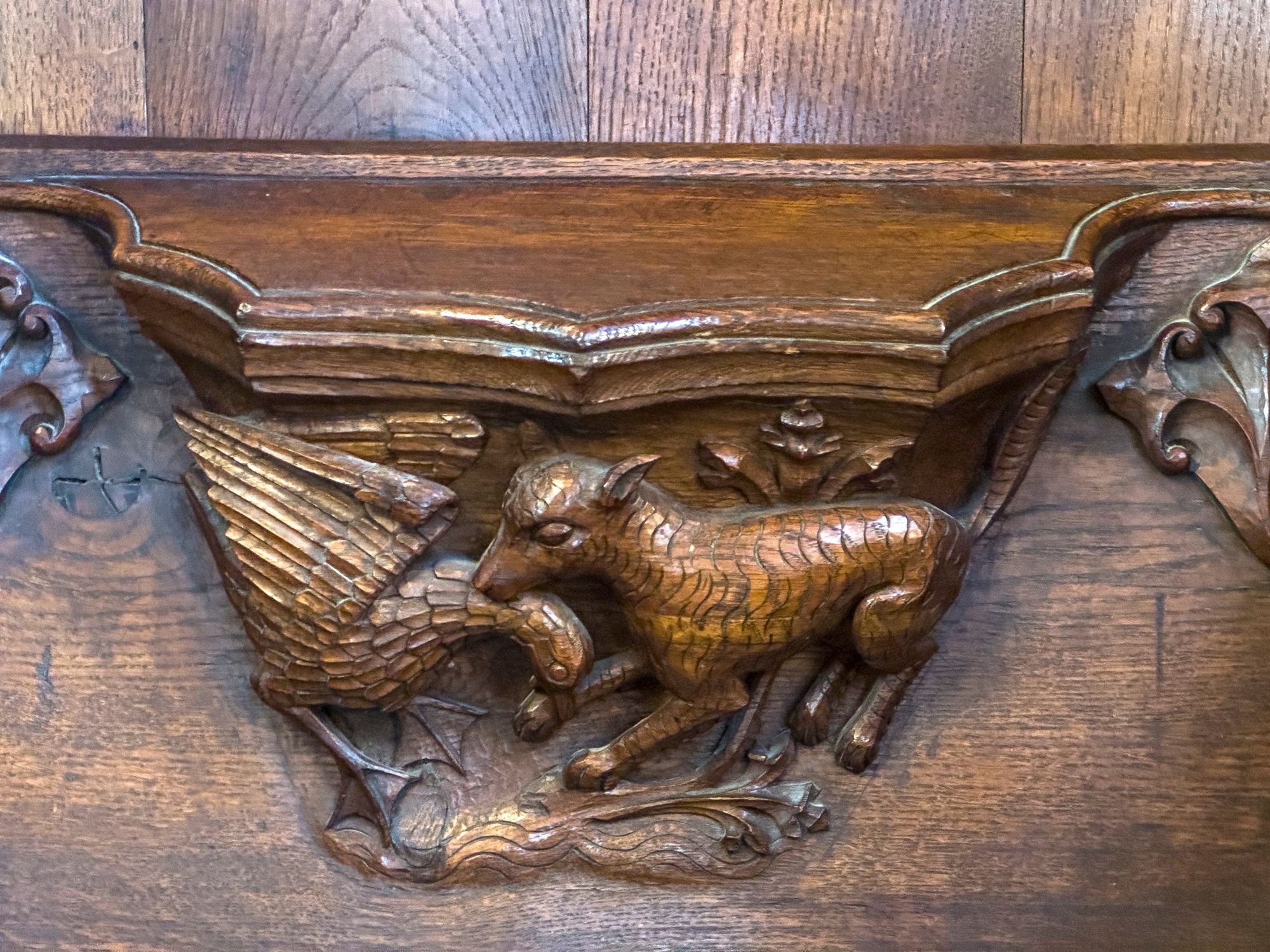
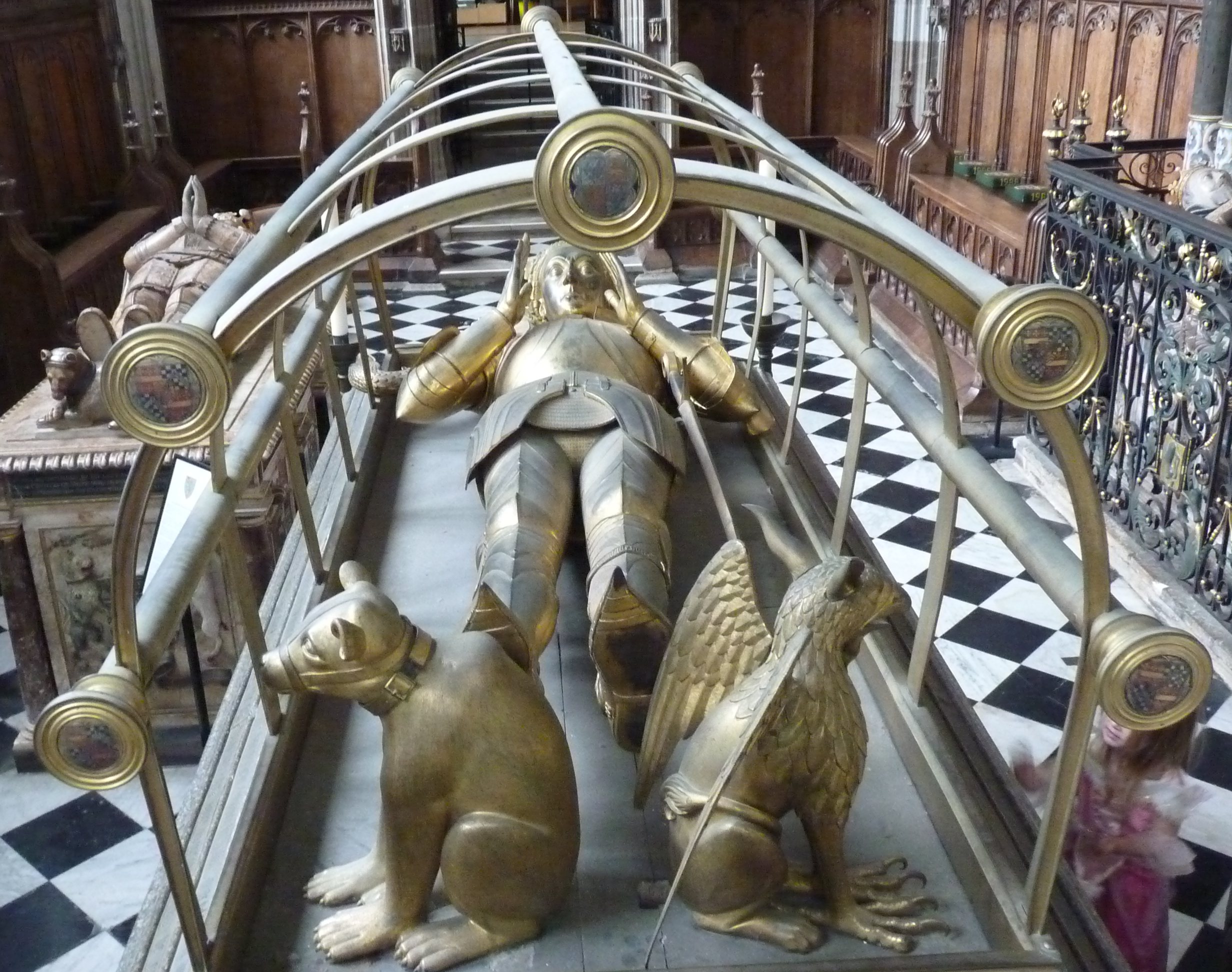
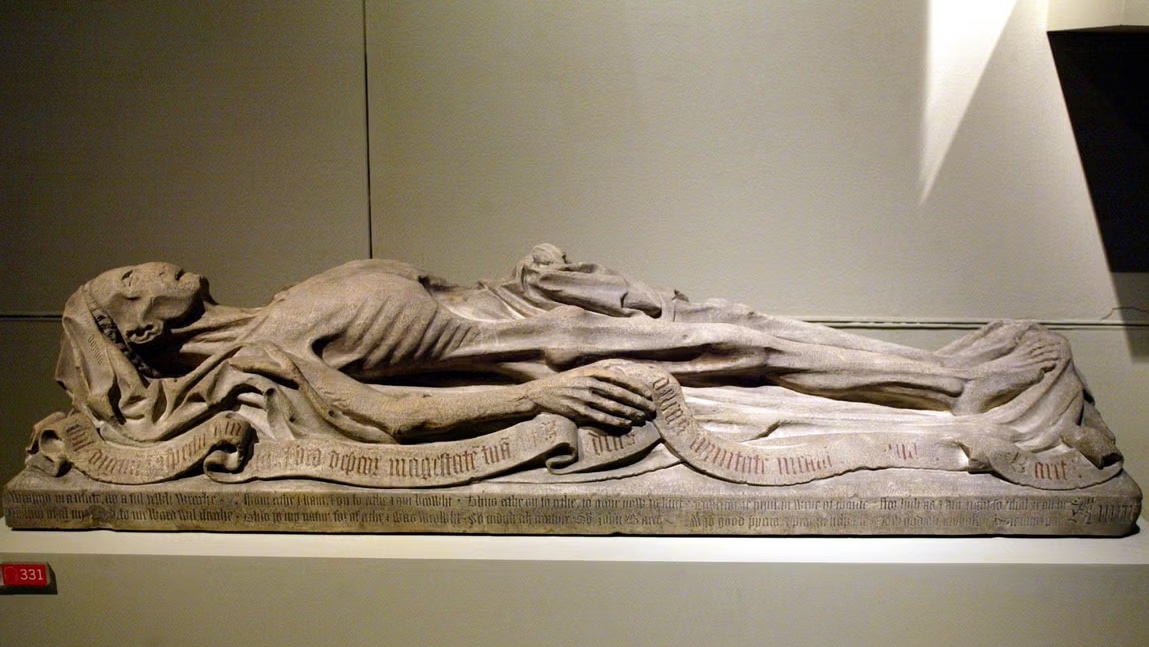
Left The 15th Century Tomb of John Baret – following the European fashion of cadaver tombs. There are some particularly fine examples in Belgium.
I like this example because, though heavily embedded in the traditions of catholic mortuary sculpture – the style so clearly represents a period of changing ideas in sculpture. There are many depictions of death and change through the ancient and modern eras in Britain, but this gorgeous and stark imagery of death allows me to draw a mental close on the Late Medieval era and look forward to the flowering of pageantry in the Early Modern.
Right Saint Anthony, sculpted in alabaster, a soft rock (crushed to make plaster) around 1450.
The end of the medieval era in the British Isles is often marked by the accession of the Tudor dynasty to the throne in England in 1485. While the Tudors are considered the beginning of the English dominance of the British Isles, the religious reformation during their reign led to the destruction of most of the statuary associated with Roman Catholicism. For example, most of the alabaster carvings in the churches were destroyed. This is a huge tragedy, but I finish this article on Ancient to Medieval sculptures with this alabaster figure of Anthony and his pig. As these cultural figures are ground into dust, like alabaster into plaster, we are ready for the emergance of a new period of sculpture in the Early Modern Period.
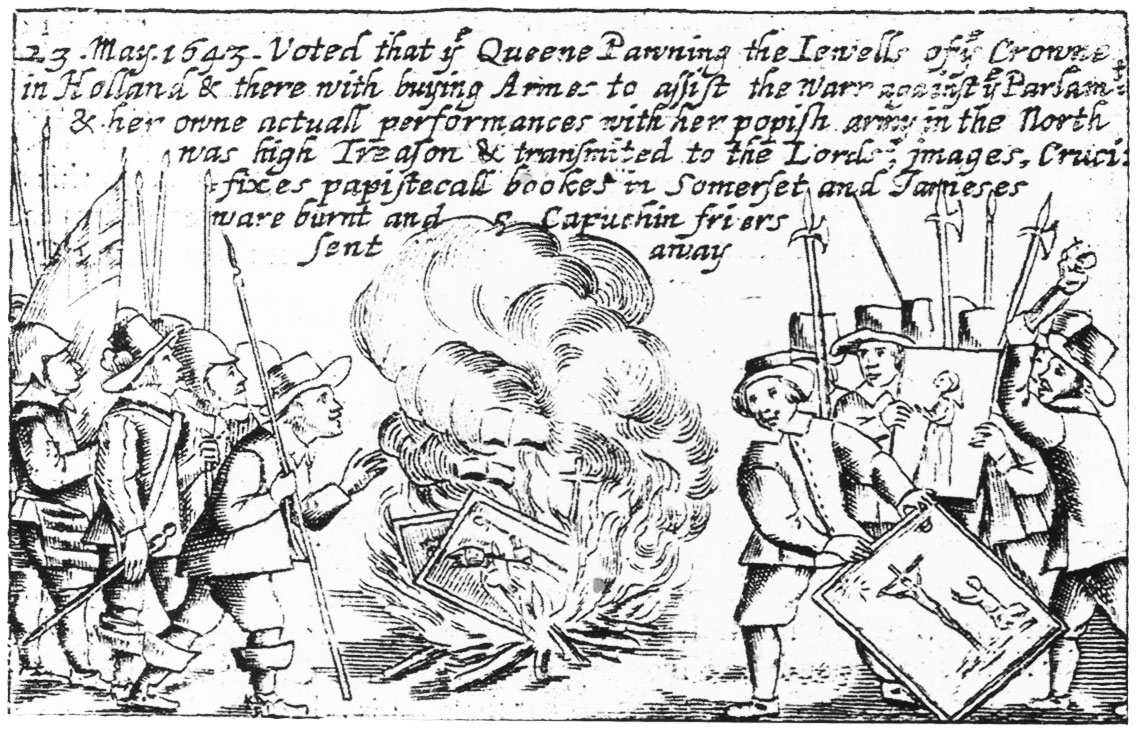
Above: Destruction of Queen Henrietta Maria’s Roman Catholic chapel artwork (she was Queen of England, Scotland and Ireland), 1643.
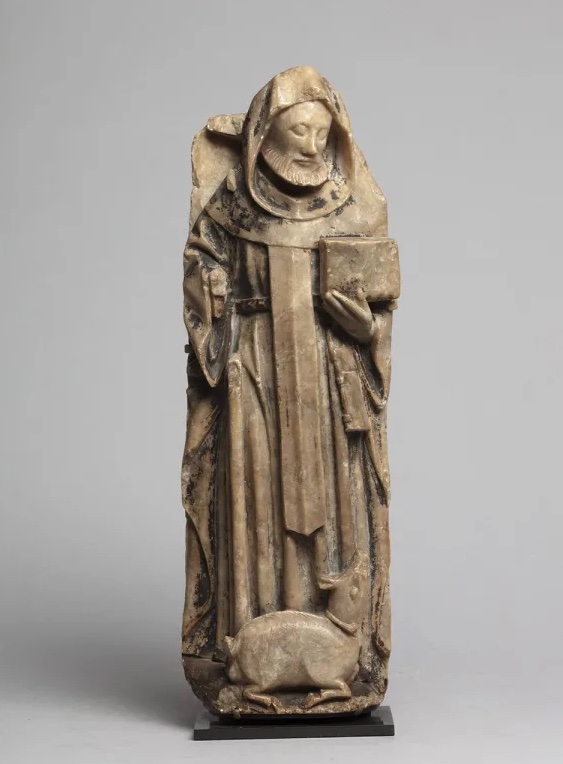
Explore Related Articles
ASTON VILLA F.C. unveils my Lion to celebrate their 150th year
Due to be unveiled in May, I have created a to scale clay, which is now being cast in Foundry Bronze metal
How to measure your dog in a Lying Down pose, for a customised statue commission
If you think you might want a statue in the future, it can be a good idea to take some measurements of your own dog. Here’s how to measure them in a lying down position.
Sculpture plinths, pedestals and columns for statues
Finding the right plinth or pedestal for your statue: including a list of suppliers, some examples of different type of pedestal, how to make your own a plinth, how to fix a statue onto a plinth.

Tanya Russell MRBS
Bronze Sculptor
Tanya Russell has become well known over the last 30 years for her life-like and vibrant animal sculptures.
Having apprenticed for 7 years with her parents, sculptors Lorne McKean FRBS and Edwin Russell FRBS and after practicing as a sculptor for a number of years, she founded the The Art Academy in London Bridge, now a thriving art college. She has completed many public and private commissions nationally and internationally.
For Tanya, her practice is not only about capturing the animals she sculpts with marks and movement. It’s about our relationships with those animals and their welfare.

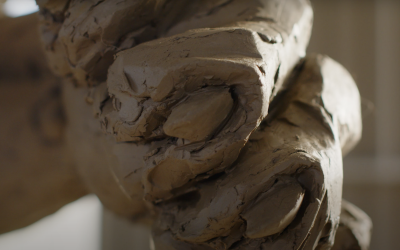
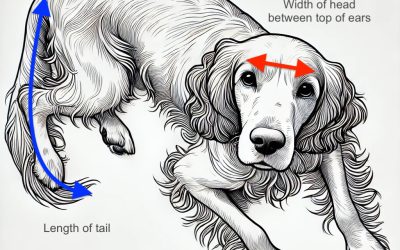
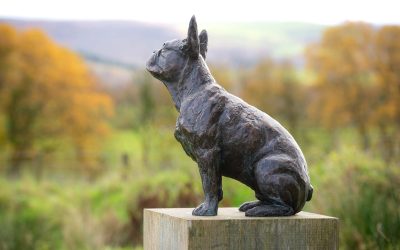
Follow The Artist
Keep up to date with Tanya's latest work!